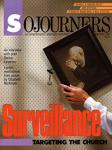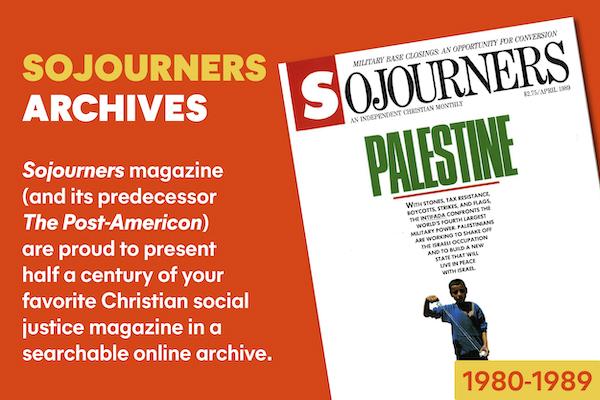A sobering fact has always haunted my steps of deepening involvement in the Nuclear Train campaign, a fact that probably also haunts each of us at some point in our efforts and that leads most of us to the tracks in due time: For tens of years, for nearly all of my life, the Nuclear Train has been running through our country virtually unnoticed, almost matter-of-factly.
Of course, nuclear weapons have to somehow get to where they are. It is somehow threatening, though, to, our very human identity to come to terms with the fact that many, many other human beings have been taking these nuclear monstrosities on their journey from conception to deployment—and with a great deal of care and attention and energy!
But perhaps even more frightening is the conditioning, or "numbing," that has occurred in the lives of many of us living with the reality of the nuclear age. Ends now largely dictate the means in our society. Hence, we have the all-too-true analogy between our cultural silence and mass self-deception in the face of global annihilation plans, and that of the people of Nazi Germany in the face of mass extermination camps.
As for myself, I am surprised to realize how late in coming were my own questions about the existence of nuclear death trains (and now, nuclear trucks). I am surprised at my surprise, for, in truth, these trains have not been passing by me oblivious to my eyes; they have been passing directly through me and have never been clearly felt by my heart.
The common terror we have been living under all these years has come from a refusal and an inability to see the Nuclear Train on which we ourselves travel. This train of violence exists and moves where we all live and work. It is so close to the center of each of our lives that we would never see it at all if it were not for the love and community and trusting instincts of friends, the lifework of past and present saints of nonviolence spilling over into our lives, and the unceasing call of the Spirit in all of this. In short, people around us have been marking the way off the train, so that we might one day find this train of violence passing through us.
We all see now by the light of those who have leaped from this train and who now stand reflecting back to us faith and courage to see the heart of our own darkness. The way off, the way out, is clear: Find the train. We have no other choice left. A long, vast silence remains behind us. And before us...?
A deep breath. And a leap.
THESE THOUGHTS and a feeling of lightness welled up in me as I and seven friends from Salina, Kansas, set off for Topeka two hours before midnight to find the Nuclear Train. This would be my first time to actually see the train and my first arrest for trying to stop it.
We arrived at midnight. The train was two hours late. The silence of waiting here together in the breaking chill hours of morning, 200 people called from all over Kansas to witness the incarnation of our careful preparation and the full strength of Spirit—this is what "tracks" work and community work is all about. Early morning bloom.
The train was coming. Approaching, it was first met by our songs—songs lifted up by almost visible prayer and supported by candlelight flickering from our hands and reflected on our faces. Slowly it passed before us on its way into the switching yards. In front of us, the bank of lights from the TV truck blazed out onto the tracks, bringing into full view the painted cars as they passed, as well as illuminating the point of trespass for those 22 of us soon to be arrested.
Walking into the light, we were stopped by the railroad officials near the tracks. Prevented from getting on the tracks as we had wished, we were over the legal line for criminal trespass. I had a distinct feeling of being in slow-motion free fall. Another leap from the train, I thought to myself. Another experience of freedom. Another pain on landing. My knees were on the ground this time, and all of us prayed in silence as the train came back by us, slowly, on its way to the Bangor base. And to where else, I wondered.
Looking up at the engine from out of my silence, I saw faces, human faces. Peering out at us were four faces in the engine pressed up to the bright lighting from the TV truck.
Then a turret car. Silence. A green car, a reddish car, a blue car. A turret car—and from there a face peered out intently from behind slits in the second security car. Young, mustached, thin, a bit baffled by it all—a resemblance to myself, I thought quickly. Yes, too much like myself.
Was I looking through a window now or at a mirror? Was I seeing a part of myself still remaining on the train? Time was compressing. There he was, walled up in illusion within illusion of security. Can he feel the beat of my heart, I wondered quickly. The train was speeding up. Can he know my compassion for him? Does he know that I know his feelings, his deep rumbling fears?
"Look at me, look at me!" I cried silently, straining my eyes to his. Sacrament, begging.
The light had blinded him momentarily, I feared. "Look at me!" From my heart tears streamed out into the morning chill. Dimly, I began then to see my own self peering out from the window, through his eyes seeing myself.
And in that awful moment I saw clearly the length and breadth of this train of violence, passing back into far distant time, reflected back to me from the tears that washed my own eyes and face clean.
The train, found once again. And it was gone, trailing memories of a sacrament, partially undone, clean through the heart of America.
Gerald Gillespie taught in the psychology department at Marymount College and was a member of the Salina Peace Coalition in Salina, Kansas when this article appeared.

Got something to say about what you're reading? We value your feedback!
